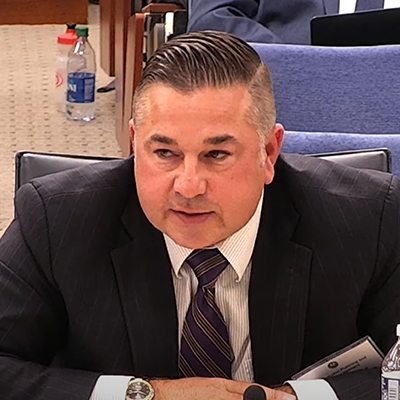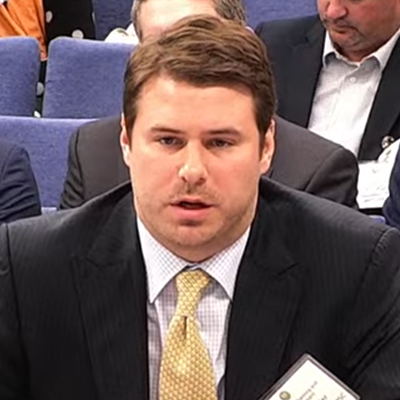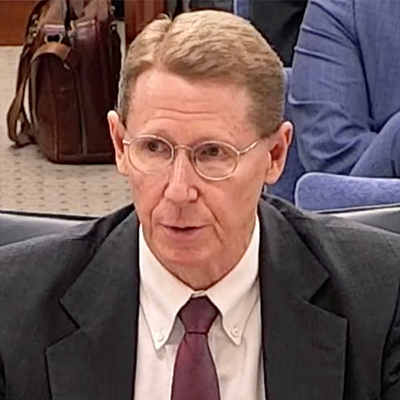State regulators and consumer advocates urged FERC Thursday to order the creation of independent transmission monitors and other measures to increase oversight over transmission owners’ planning and spending.
Multiple speakers at FERC’s daylong technical conference on transmission planning and cost controls said FERC action was needed to address an “information asymmetry” in transmission planning and the TOs’ increasing spending on local transmission projects that face little oversight (AD22-8).
In PJM, for example, transmission owners’ spending on local “supplemental” projects since 2014 has dwarfed that on baseline projects meeting regional needs, which are vetted through the RTO’s Regional Transmission Expansion Plan.

|
Independent Transmission Monitor
The commission heard from more than three dozen witnesses, many of whom said they supported the creation of independent transmission monitors to provide expertise enabling RTOs and state regulators to ensure their stakeholders’ transmission dollars are being spent most cost effectively.
Michael Haugh, director of analytical services at the Office of the Ohio Consumers’ Counsel, said consumer advocates don’t have access to enough information to ensure project costs are prudently incurred.
 Robert Weishaar, McNees Wallace & Nurick | FERC
Robert Weishaar, McNees Wallace & Nurick | FERC
“We don’t know what we don’t know, and that’s a big issue. … We’ve found that more independence in these types of situations is better,” he said.
Haugh said an independent monitor would be particularly helpful in PJM for TO-proposed supplemental projects, where PJM’s only review is to make sure they do not harm reliability.
“We feel … an independent monitor would be able to look at these independently and see if there are competitive solutions that are better,” he said.
“Our view is that all transmission facilities over which the commission has jurisdiction should be planned by an independent transmission planner,” said Robert Weishaar, energy lawyer for McNees Wallace & Nurick, who represents industrial customers in MISO and PJM. He said an independent transmission monitor could have a standing set of engineers that could analyze and review projects from an objective standpoint.
Weishaar said for years there’s been a “somewhat artificial regulatory distinction” between local and regional transmission projects in terms of oversight, cost recovery and eligibility for competition.
 Rhode Island Public Utilities Commission Chair Ron Gerwatowski | FERC
Rhode Island Public Utilities Commission Chair Ron Gerwatowski | FERC
Rhode Island Public Utilities Commission Chair Ron Gerwatowski said someone “with the authority of the commission” involved at the start of a transmission planning process would create “a cost oversight which I believe does not exist in New England today.”
“It’s not so much the information because there are protocols that are put in place that are actually very helpful [to] anyone that has the expertise to look at it. But the question is, ‘Who’s looking at it?’” Gerwatowski said.
Gerwatowski said a monitor would introduce some degree of risk to today’s essentially no-risk rate system, which he said he believes is not FERC’s intent. “The way you recover transmission rates is: Spend the money; get the money. Spend the money; get the money,” he said.
Kentucky Public Service Commission Chair Kent Chandler said an ITM would provide benefits similar to that of independent market monitors in RTO markets.
 Kentucky Public Service Commission Chair Kent Chandler | FERC
Kentucky Public Service Commission Chair Kent Chandler | FERC
“I don’t think there’s anything, for instance, that the IMM in MISO or the IMM in PJM do to usurp state authority in relation to choosing our generation. … They provide us with an incredible amount of information in that regard. I can understand people saying it might be an extra layer of bureaucracy, but for many of these projects, it may be the only set of eyes [that would look at] the need and the planning. … I look at it as being an opportunity to provide any of us [regulators] evidence … an independent set of eyes who actually knows what they’re talking about.”
Henry Tilghman, speaking for the Northwest & Intermountain Power Producers’ Coalition, said regional independent transmission monitors would be more efficient than leaving the responsibility to states.
“The reality in the West is if you’re doing a regional transmission project, you’ve got four, maybe five, states plus probably a federal government agency, Bonneville Power Administration. And is it really more efficient to require each of those individual states to staff up to do that sort of independent analysis of the transmission proposals? Or is it more efficient to have a single entity who has the expertise who can provide each of the states consistent information about a proposed project? And I think it is.”
“We have an opportunity, I think, to manage the cost a lot better and the project activity as it’s being proposed,” said Randy Howard, general manager of the Northern California Power Agency. “Because right now, there’s just not a way for us to do that. … We just don’t get access early enough in the process to influence the prioritization of what’s important for reliability and resiliency. And obviously, through our wildfires and other activities, we’ve seen where some of our projects that we tried to impress upon those utilities that should be done earlier, weren’t done. And then consequences occurred.”
TOs Push Back
Witnesses representing transmission owners strongly opposed the ITM concept.
Carolyn Cowan Barbash, vice president of transmission development and policy for NV Energy, said an independent planner isn’t necessary in the West, where states are larger and regulatory processes are sufficiently transparent.
WIRES Executive Director Larry Gasteiger argued that sub-delegating the authority of FERC to independent transmission monitors would invalidate their independence. He said he was troubled by the expectation that FERC lend out its authority to a third party when the commission itself should have oversight authority over costs.
 Charles Marshall, ITC Holdings | FERC
Charles Marshall, ITC Holdings | FERC
Charles Marshall, vice president of transmission planning for ITC Holdings, said his company offers a high degree of data visibility on its proposed transmission projects, no matter how small the price tag.
Also, he said, ITC cancels plans that internal reviews show are no longer needed.
“That’s not a tariff requirement; that’s something that we’ve committed to our stakeholders to do,” Marshall said. “We’re continuously internally reviewing the merits of projects that we’ve yet to commence construction on.”
Jeff Burleson, a senior vice president at Southern Co. (NYSE:SO), recalled an instance several years ago in which the utility was able to cancel a major transmission line it was planning through virtue of its vertically integrated structure.
 Jeff Burleson, Southern Co. | FERC
Jeff Burleson, Southern Co. | FERC
“Effectively, all of our planners sit around the same planning table — generation planners, transmission planners, fuel supply planners — and we look at the alternatives,” he said. “And one of the alternatives we saw to this 90-mile, 500-KV line was siting generation close to the load.
“I don’t think an independent monitor would be helpful to us,” Burleson said. “I think it would just add an additional layer of bureaucracy.”
Attorney Jon Schneider, a partner in Stinson LLP who spoke on behalf of the Large Public Power Council, also expressed doubts about the ITM’s value in controlling costs.
“We have three institutions on the scene as we speak. We have [FERC], we have state commissions, we have RTOs and ISOs. And if we need a fourth institution, it does strike us that something’s sort of going wrong with respect to the oversight exercised by the folks that are already looking at this,” he said.
“If you improve the transparency of the processes, beef up staffs at the state and [FERC] and on the RTO level, we’re not sure that the ITM is cost beneficial with respect to cost oversight. We’re not unsympathetic to it … but we’re a little bit circumspect.”
Defining ITM’s Role
MISO Director of Expansion Planning Jeanna Furnish said FERC should consider whether it intends for an independent transmission monitor to be a one-stop solution and what its role will be in disseminating information, holding meetings and engaging consumer advocates and state regulators.
Furnish pointed to MISO’s ongoing long-range transmission planning effort, which considers a multitude of reliability needs.
“Is it actually appropriate to put all the eggs in one basket? … Are we talking about 350 projects and there’s capacity for this independent transmission monitor to think about alternatives for every single project? I mean, that’s a huge work effort,” she said.
“And that’s another question about how much would all of that cost,” Commissioner Willie Phillips agreed.
Commissioner Allison Clements said that while the set of responsibilities of independent transmission monitors is “not yet fully baked,” a monitor proposing alternatives to every single project “isn’t really the spirit” of what FERC is considering.
Robert Ethier, ISO-NE’s vice president of system planning, said an ITM could provide needed resources but that the model should not be that of the market monitors.
“There’s a need for more public planning ability, more public technical capability, but I’m not sure that an ITM reporting to [FERC] or … reporting to the ISO makes sense. If we have an ITM that reports to the states, I could understand that, because to me, what the states need are more resources to deal with the future. …
“We, in New England at least, are going to ask a lot more of the states going forward. We are going to look to them for guidance on public policy projects in a way that we never have before. And it frankly makes me nervous, the idea that they’re not going to have additional resources to help fill that role.”
Pallas LeeVanSchaick, vice president of Potomac Economics, the market monitor for MISO, NYISO, ISO-NE and ERCOT, said RTOs can’t be expected to provide independent oversight of transmission owners’ local projects.
“We’ve found that [RTOs are] extremely deferential to the concerns of the local transmission owners, and it’s just hard to see that they’ll be able to scrutinize things or ask questions or get them to look at alternative assumptions in the way that you would need,” he said.
FERC Authority Questioned
Glick asked Ari Peskoe, director of the Harvard Electricity Law Initiative and prolific social media commentator, whether he believes FERC has jurisdiction to require regions to establish independence reference monitors, joking, “[I] normally get great legal advice [from you] on Twitter.”
Peskoe said FERC has authority through Order 890, which was “intended to provide transmission customers and other stakeholders a meaningful opportunity to engage in planning along with their transmission providers.”
“There’s a lot of evidence that we’ve heard today and in the record, and as well as in the RM21-17 [Notice of Proposed Rulemaking on transmission planning] that that just isn’t the case right now. And so, I think an ITM could be a solution to that.”
Commissioner James Danly, who participated by phone and spoke little during the conference, disagreed.
“I’m not entirely sure that our jurisdiction is a complete, obvious case that we have the power to do these things,” he said. “I don’t see a whole lot about meaningful opportunities to engage in the Federal Power Act text. And even granting that we have the jurisdiction to do it, we still have requisite statutory showings where we have to show under [Section 206] that the rates are not [just and reasonable]. And applying universal solutions across every region — despite the actual rates that are the result in the planning processes — I think is probably violative of the statute’s requirements.”
Peskoe also said the commission could order monitors in non-RTO areas as well as organized markets. “The commission’s open-access rules apply to all utilities,” he said. “Assuming the commission believes it can still supplement its open-access policies, I believe they would apply to all utilities [and] transmission providers.”


